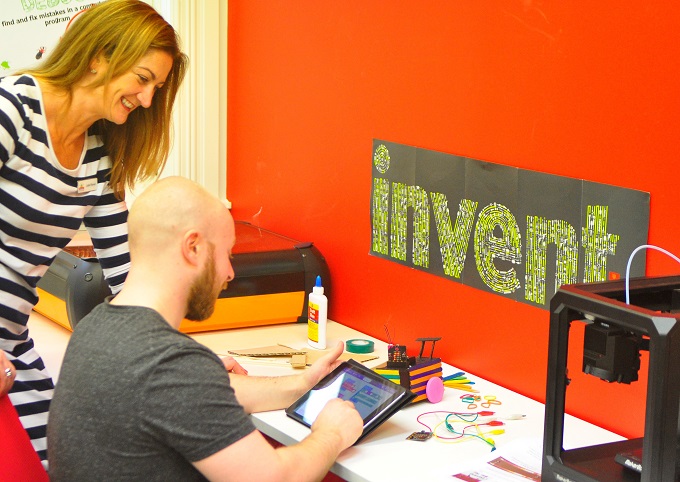
Are you ready? If not, now would be the best time to prepare.
Digital technologies and hangarau matihiko are dedicated to teaching tamariki and children how technology works, and how they can use that knowledge to solve problems. As soon as the new curriculum is introduced, teachers will be required to teach students how digital technology works, not just how to use it. The content will give students a deeper understanding of computer science principles and the programmes that drive digital technologies.
The idea for the new curriculum was developed in the 2014 Science and Society Strategic Plan, ‘A Nation of Curious Minds: Te Whenua Hihiri i te Mahara’, which is a joint plan between the MoE, MBIE and the office of the Prime Minister’s chief science advisor. This is a proactive strategy developed from working closely with education experts and the digital technology industry, using the most up-to-date research to develop and refine a curriculum that our next generation will benefit from the most.
By now, your plan for change and improvement in the use of digital technologies for learning across all areas should be in place, with the aim to ensure students can thrive in the digital age as technology is integrated across all subjects. There are already national professional learning and development (PLD) opportunities available to support leadership and digital technologies and hangarau matihiko.
Let us look at the tools, strategies and funding available to assist and support you and your school in implementing the digital technology demands in the curriculum…
The Ministry of Education introduced a system that focuses on delivering the right support at the right time to schools, kura and communities of learning/Kāhui Ako that “need it most”. This makes “centrally funded PLD more effective making more of a difference to student achievement in priority areas, supporting school leadership and strengthening professional networks as a complementary source of PLD”.
The government states that the priorities from 2015 for the next three-to-five years are pāngarau, pūtaiao, te reo matatini (pānui, tuhituhi, kōrero), maths, science, reading and writing, and digital fluency.
“Digital technologies and hangarau matihiko PLD will support teachers, kaiako, schools, kura, Kāhui Ako and clusters to successfully implement the new Digital Technologies & Hangarau Matihiko (DT & HM) components of the Technology learning area and Hangarau Wahanga ako,” according to the government.
As this new curriculum content is the first change to the National Curricula since they were released and because of its importance, the application process has been simplified from the usual PLD process. Applications can be received from schools, individually or in clusters as well as groups of teachers or teachers in specialist teaching roles or departments. “Where possible, groups of schools or teachers should nominate a lead school so that PLD hours can be allocated.”
Now! However, the applications will be assessed by the national allocation panel only once a term. Ensure that you check the website for the cut off dates for the current term or your application will have to wait and be included in the next round.
When your application is successful, you will receive confirmation of allocation and a list of accredited facilitators, alternatively if it is unsuccessful you will get feedback about your application. You must choose your facilitator who will work with your school, kura of Kāhui Ako to develop your digital technologies and hangarau matihiko PLD simple online delivery plan, which forms the funding agreement between the facilitator and the Ministry.
Feedback is important. Your progress will be monitored, and feedback recorded every six months. At the end of your PLD, there will be a final report where you can review your outcomes.
Digital technologies are integral to society, our workplaces and our homes, moreover in the future, they will be even more so. It is vital that the new curriculum will teach and inspire students to design their own digital solutions, to become creators and leaders in an industry and indeed world of unprecedented change and not just digital users.
The Ministry has rolled out this package of resources and PLD support to build their digital confidence and capability to successfully implement the new curriculum. This technologies and hangarau matihiko curriculum aims to place New Zealand in a global leader position for digital technology and make sure future graduates are job-ready so you also need to be ready for the challenge.
A report from the ERO finds new teachers aren’t prepared to teach, citing poor initial…
Dr Sarah Aiono defends modern education practices against recent criticisms, outlining the evidence behind 21st…
The country's largest union has criticised the funding of charter schools, saying it diverts funds…
What does the ideal learning environment for the 21st century look like? In this Special Report,…
Is your current school management system still fit for purpose, or are you paying for…
Bullying contributes to poor wellbeing and absenteeism in New Zealand. Discover how you can address…
This website uses cookies.